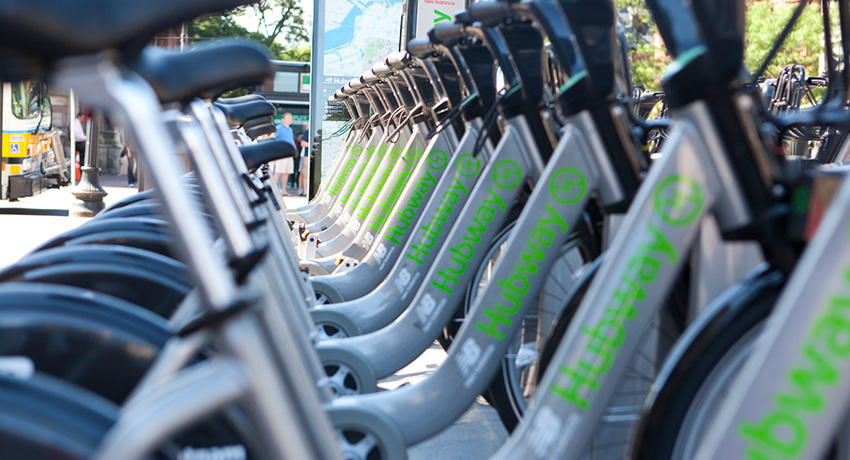What Happened to Head Injuries in Bike-Share Cities?
A new study in the American Journal of Public Health compared injury rates in cities with bike-share programs (like Boston’s Hubway, of course) to cities without one. The researchers discovered some good news and some bad news, which led to some conflicting headlines about how bike-share systems affect cyclist safety.
The bad news first: the proportion of head injuries as a share of total bicycle-related injuries increased in the bike-share cities after the programs began. A team of Canadian and American researchers evaluated injury data in five cities (Montreal, Washington, D.C., Minneapolis, Boston, and Miami Beach) for 24 months before each city implemented its bike-share program and then for 12 months afterward. The researchers also evaluated injury data from five cities where bike-share didn’t exist. In cities with bike-share, the proportion of head injuries to total bike-related injuries increased, whereas in non-bike-share cities, it remained roughly the same. This is the conclusion that the team of Canadian and American researchers emphasized in their study, and they used it to recommend that cities make helmets available with their bike-share programs. (Boston is, to some extent, ahead of the game there with their helmet kiosks.)
Then there’s the good news, which takes a bit more digging through the data to locate. As The Atlantic’s CityLabs reported in a corrective to the fear-inducing headlines that preceded it, a focus on proportion aside, both overall head injuries and total overall injuries actually declined in cities that implemented bike share programs. CityLabs reports:
Total injuries per year in [bike-share cities] decreased about 28 percent, and total head injuries decreased about 14 percent … By comparison, in the non-bike-share cities, total injuries increased slightly … and head injuries decreased just 4 percent over the same period.
Comparing proportion of head injuries to total injuries paints a very different impression of the impact bike-share had on cycling safety than just looking at total injuries themselves, which decreased far more than in cities without bike-share. The study doesn’t explain what might have caused either the net decline in injuries or the proportionate increase in head injuries. But the decline in injuries seems to align with the “safety in numbers” theory, which suggests that the more cyclists take the road, the more cars moderate their behavior, the more cycling is normalized, and the safer cycling becomes. If, in fact, bike-share systems spurred an increase in cycling (and it is, in fact, on the rise in Boston) then this might cause a drop in injuries. CityLab also suggests that cities with bike-share also have better bicycling infrastructure, which both increases the number of bikes on the road (and thus the safety in numbers effects) and makes all those bicyclists safer.
As for the fact that injuries in bike-share cities are now more likely to be head injuries, this could be because bike-share riders are less likely to wear helmets, as the study suggests. CityLab has another thesis:
It’s also possible that bike-share bikes are safer in general — with their heavy frames and wide tires — producing fewer total injuries that require treatment and thus making head injuries appear proportionately more frequent.
The study’s point is well taken. The authors focused on the conclusion that pointed out a potential cause for concern, and made recommendations to cities accordingly. But riders shouldn’t be overly discouraged by headlines like “Wear Your Helmet! Bike Shares Linked to Brain Trauma.” According to this data, bike-share is as linked to an overall decline in brain injuries as it is to an increasing proportion of them to total injuries.



